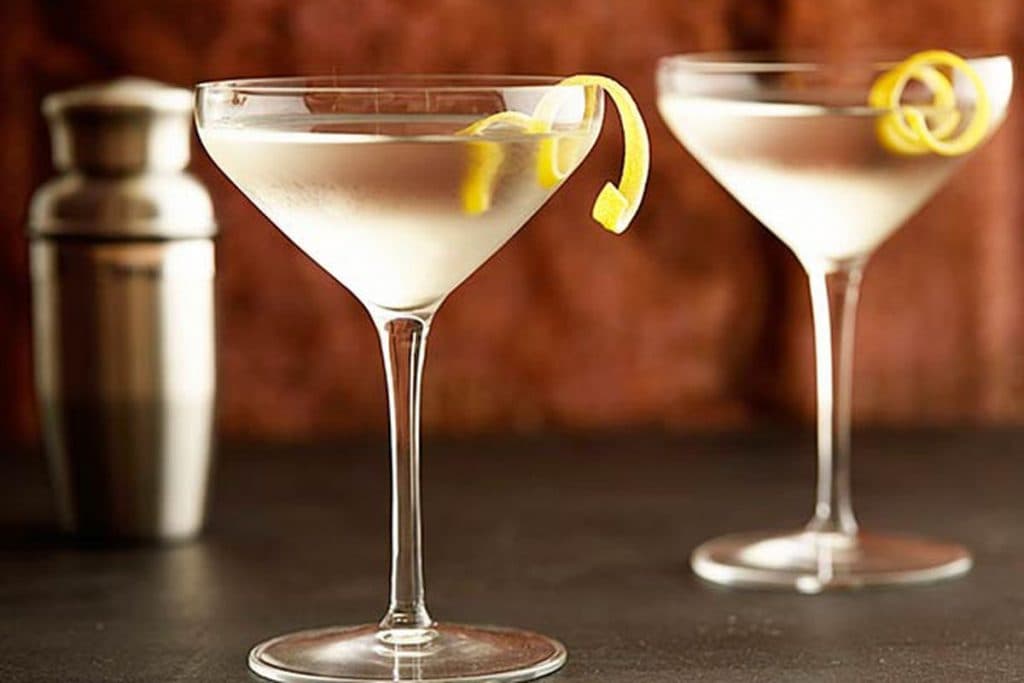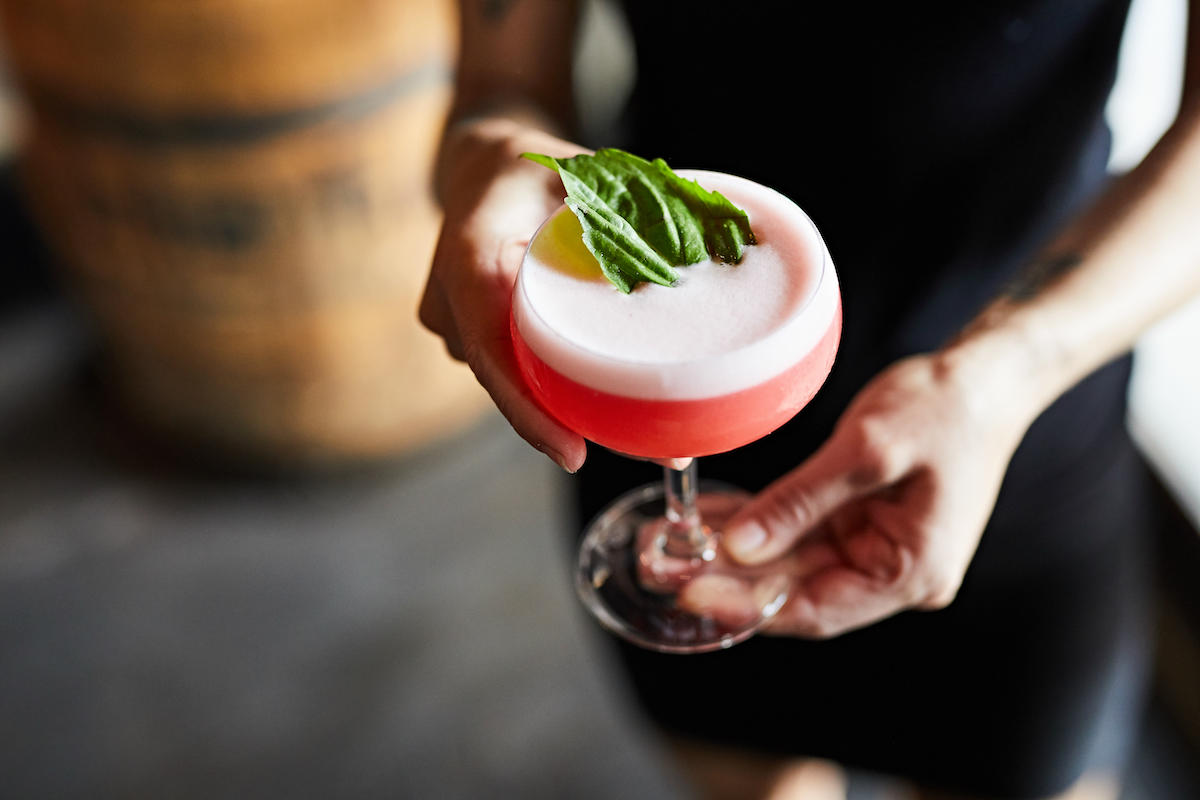When Alessandro Palazzi talks about the Martini, we listen. Palazzi, who has been bartending since 1975, manages the bar at Dukes London, whose eponymous Martini is famously prepared by rinsing a frozen glass with vermouth before filling it with from-the-freezer Plymouth Gin and ending with an expression of lemon peel.
In addition to tending bar at Dukes, Palazzi has collaborated with distillers including England’s Sacred Spirits to produce an English Dry Vermouth and English Amber Vermouth, and with the makers of No. 3 London Dry Gin. He also maintains an active presence on Instagram, where he shares short instructional videos with his more than 16,000 followers.
Over a late-night Zoom session, we picked Palazzi’s brain on the art of preparing, serving, and enjoying a Martini, and in the process learned about his favorite under-the-radar gin, what makes for a great—and a poor—Martini, and what the cocktail has in common with fine caviar. Read on below to gain more of the Gin Guild member and Keeper of the Quaich’s keen insights.
Note: the following conversation has been condensed and edited for clarity.
On Selecting a Gin
“For a Martini, I always look towards the London dry style. For me that’s what works better for the type of Martini we serve. Even if they come from Kenya or Japan, they are all London dry style.”
On Serving Gin
“You cannot be pretentious. Some of the mistakes I see with some bars is that they want to be a little bit trendy, they want to be different with very niche gin… some people are attached to a brand and there’s nothing wrong with that. It’s what they want, and they don’t care to try any other.”

On Beefeater’s Hidden Charms
“I like Beefeater gin. It’s a gin people snob at because it’s quite common. It’s one of the best gins for a Martini cocktail… if you ever want to play a trick with a friend, you make two Martinis, one with Beefeater, and another one with a fancy gin. They will be surprised when you say which one is Beefeater.”
On What Makes a Worthy Vermouth
“The body needs to have wormwood. Some of the vermouths that I have been trying taste like water. Most of the vermouth we have is between 16 and 18% ABV, and we brought [Sacred Vermouth] to 21-23%. It is stronger, it has that wormwood flavor, that bitterness, and it’s sweet as well as spicy and fruity.”
On Adding Citrus Oil
“Whether you have lemon or orange or grapefruit… We actually squeeze [the fruit], and the aroma goes right to your nose, so it’s an inviting aroma. You want to drink it, and then as the glass gets a little bit warmer the oil goes down and changes your drink.”
On Using Local Citrus
“In the States you have the Meyer lemon from California, which is perfect. You cannot get the Amalfi lemon. So, get the local lemon, squeeze the lemon peel, and make sure there is no wax.
On Who Actually Orders Wet Martinis
“It’s quite rare we get people who like a Wet Martini, and usually it’s a bartender. Funnily enough, 90% of the time someone who is asking for a Wet Martini is in hospitality”
On Having an Open Mind
“I always relate it to food: some people like it rare, some people like it well-done. They’re different.”
On Respecting—and Reinventing—the Dirty Martini
“Do I agree with the Dirty Martini? Personally, no. But if you come to the bar, we will make it for you, no problem. I will sometimes try a different way of doing it, but just because it’s not my taste doesn’t mean that if you like it there is something wrong with it. I have a couple of Dirty Martinis: one with white truffle when it’s in season in the winter, and then I do another with bottarga [cured fish roe]. Normally you put it in pasta, but I discovered that with a particular gin [Harris Island Gin], there’s a difference and it works perfectly. It’s like drinking caviar.”
On the Martini’s Sworn Nemesis
“The biggest enemy of the Martini is water… In America they shake it too much and they put it in a large glass. That is wrong.”
On Shaken vs. Stirred
“A proper Martini you can shake. There’s nothing wrong with shaking, you get a bit of the dilution. But before you shake it, make sure there’s no water from the ice.”

On Freezing a Glass on Short Notice
“Put some ice in your Martini glass and add a little bit of water so that it gets cold quicker. And do that maybe a half an hour before you serve the Martini so that the glass is really cold.”
On Martinis Gone Bad
“The last time I was in New York we went to this bar… I said I’d like a Martini, and by the time it came it was in a double cocktail glass. Wrong, because it’s got to be in a smaller glass, a coupe, and it had a tiny piece of lemon… I made a face, and my boss asked what was wrong and I said, ‘This is not a Martini, this is a big glass of water flavored with juniper.’”
On Making the Martini
“It’s not a difficult cocktail to make. You just have to respect the frozen glass and your gin of preference. If you stir or shake, make sure there is as little water as possible. Of course, there is going to be dilution, you just have to be fast. And the lemon—squeeze the oils.”
On Enjoying the Martini
“A Martini is not a shot. You don’t drink it quickly. It is a cocktail where you want to taste the purity of the gin or vodka combined with the vermouth. It’s something you sip. You don’t understand if you drink it right up. It’s like caviar. You’re not going to eat it with a big spoon, you savor it. That is the Martini. You see how it changes.”
On Serving More Than Drinks
“This is how you build a relationship with the customer and they become your friend because they trust you; not only with the gin, but with recommending a restaurant in the area that we believe in. It becomes not just the Martini… it becomes more than just a drink.”
On Drinking Martinis Himself
“That could be Plymouth, it could be wet, it depends on the mood… Usually if I come home, I will only have a drink if I’m off the following day, not if I have to work.”



